Whether you pedal to work, school, or community areas like parks, securing your bike properly is a necessity. Learning the right way to fasten your bike to a rack is crucial to protect it from potential bike theft. We'll dive into the importance of appropriate bike locking, the best kind of bike racks, and how to lock your bike on various parking solutions.
The Benefits of Locking Up Your Bike
Securing your bicycle to bike racks delivers benefits that every rider should take advantage of, including:
- Deters Bike Theft: Secure U-locks and chains thwart smash-and-grab attempts, protecting your investment.
- Avoids Replacement Costs: Paying a little extra for a quality lock saves the much greater expense of replacing your stolen bike.
- Provides Peace of Mind: Locking up effectively lets you walk away less worried about return trips and finding an empty rack.
- Encourages Bicycling: Riders who never lock bikes due to past thefts or lack of racks ride less. Proper parking infrastructure promotes cycling.
Take advantage of this by installing secure racks in highly visible locations around parks and city areas. The minimal infrastructure investment pays dividends through boosted personal security and bicycle adoption for healthier communities. To learn more about enhancing city life with commercial bike racks, read our guide.
Selecting Secure Bicycle Locks
The first key step is using a high-quality lock that can withstand attacks. U-locks and hardened chain locks provide the best security over lighter cable locks. Check the lock strength rating to compare cut resistance—16mm and above—which thwarts most hand tools used in bike theft. Match your lock size to snugly fit within rack parameters without wiggle room. Generally, the more you invest in your bike, the more you’ll want to spend to protect it.
- U-Locks: U-locks with rectangular shackles offer pry-resistant security thanks to narrow interior space. However, small sizes may limit what you can lock up.
- Chain Locks: Thick chains of interlocking links provide flexible usage. But they can be heavyweight and lack mount points.
Bike Rack Styles and Solutions
There are diverse bike rack options to meet different security, capacity, accessibility, and aesthetic needs. Familiarize yourself with how to lock bikes tightly, no matter the design.
Basic Loop Racks
The simplest and most ubiquitous design is the basic loop rack, with one or more large U-shaped metal loops anchored to concrete or ground fixtures. These offer easy wheel slots for locking, though provide less stability than other options.
Grid Racks
Grid bike racks provide an array of interlocking perpendicular rails at various heights that allow diverse bikes to easily slot their wheels into openings. This provides consistent support.
Circular Bike Racks
As the name suggests, circular bike racks feature large continuous rings or hoops that enable wheels to be inserted from any direction while keeping bikes upright. Their capacity and visibility make them favored choices.
Low-Profile Racks
For a minimized visual impact just inches off the ground, low-profile bike racks employ modified wheel bender shapes to provide security. Common in contemporary architecture, their small footprint blends into their surroundings.
Custom Racks
If a tailored aesthetic is desired, custom bike racks can be fabricated in unlimited shapes with branded cutouts showcasing logos. Match any location decor through unique sculptures and designs.
Beyond rack types, inspect build quality to prevent theft vulnerabilities. Durable powder-coated steel and aluminum resists cutting and corrosion. Target racks with a continuous loop design without bars for prying access. Avoid secondary grip points near walls or posts which could provide leverage.
Strategic Bike Rack Placement
Selecting optimal locations for bike racks is crucial for encouraging ridership, providing convenient access, and boosting security against theft. Beyond rack styles, take into account sightlines, terrain, access routes, and existing structures when setting secure parking.
Ideally, bike racks should be:
- Centrally Located in High-Traffic Areas: Positioning racks in popular campus zones, building entrances, parks, and neighborhoods promotes legitimate use while putting thieves on display.
- Within 50 Feet of Main Doors: Convenient proximity to destinations encourages cycling by employees and visitors with hassle-free transitions.
- On Stable, Even Ground Surfaces: Flat, durable installation pads optimized for sidewalk clearance or grass/gravel indentation provide steady parking.
- Under Security Lighting and Cameras: Racks placed by bright lights and active CCTV monitoring eliminate blind spots that cause problems.
Carefully weigh all factors, from theft deterrence and ease of access to ground stability and existing infrastructure, when selecting bike rack locations. Optimal placement promotes community adoption, while strategic sightlines provide peace of mind. To learn more about the importance of proper spacing for bike rack installation, read our guide.
Locking Frame and Wheel Securely
Properly securing your bicycle’s frame and wheel to racks is the best theft deterrent. Consider rack and lock styles to eliminate all wiggle room while tightly binding major components in place. Follow these techniques tailored to different fixtures when fastening locks:
- On Loop Racks: Position your bike flush against the rack edge, allowing u-lock or chain to capture both wheel and frame crossbar if size permits. Lock crooked if needed.
- With Grid Racks: Slot your front or rear wheel securely into an opening rail cavity. Tightly lock the shackle around the frame crossbar and adjoining grid bar to immobilize against twisting or leverage attacks.
- On Circular Racks: Fully insert your front wheel into the center of ringed racks, which offer 360 degrees of access. Position your lock through the circular hoop and bike frame inside the ring perimeter to maximize stability.
- With Low Profile Racks: Insert your wheel securely into the modified bender-style rack opening near the ground. Tightly lock your shackle through the frame crossbar and the rack to remove wiggle room.
In all cases, tightly fill empty spaces with hardened steel locks. For extra security on expensive bikes, a second U-lock or chain further deters determined thieves. Proper locking technique secures your bike’s valuable components to match their worth.
Locking Quick Release Wheels and Seats
Quick-release wheel and seat mechanisms allow fast theft if left unprotected. Always secure them even if locking frame:
- Thread bolts on wheels to deter removal.
- Lock the seat in a lowered position with a U-lock or chain.
- Loop removable lights, bags, and baskets into the lock.
Avoid These Common Bike Locking Mistakes
While proper locking technique fortifies your bike against theft, small yet crucial errors leave opportunities for removed wheels and cut locks. Be mindful to sidestep these vulnerable mindsets and methods for maximum security:
- Locking Only the Wheel: Fastening your shackle or chain through just the wheel enables thieves to simply detach components from an unlocked frame and walk away.
- Leaving Wiggle Room Around Locks: Attempting to lock in a hurry often leads to small yet critical space around the shackle and frame. This allows prying tools to attack vulnerable gaps.
- Using Weak Cable Locks: Lower-cost cables seem appealing but offer little resistance once bolt cutters are applied. Invest in stronger deterrence equal to bike value.
- Not Removing Quick-Release Wheels: Quick-release seats, wheels, and accessories are prime targets if left on an unattended bike, regardless of frame locks.
Double-check for a snug fit with no wiggle room, a fully locked frame and components, and high-grade locks lasting for years.
Additional Bike Security Tips
The proper locking technique forms a strong foundation against theft. But extra proactive measures further shield your bicycle investment in case the unfortunate occurs:
- Register Your Bike: Record your bike's unique serial number and details in public databases like Bike Index. This aids recovery and makes it less appealing to thieves.
- Take Photos and Document Features: Catalog any distinguishing scratches, stickers, or custom components with images. This helps confirm ownership.
- Use Cover: Concealing high-end mountain bikes, E-bikes, or other expensive models with a bike cover offers an added layer of security when locking up outside for extended periods.
- Install GPS Trackers: Hardwired or concealed GPS tracking devices can notify you of suspicious movement and pinpoint location if stolen.
Set yourself up for success before the unfortunate occurs by thoroughly documenting your bike, enabling tracing, establishing accountability with registration programs, and exploring extended protections. Combine with proper locking and storage to protect your investment fully.
High-Quality Commercial Bike Racks From Furniture Leisure
For over 15 years, Furniture Leisure has provided commercial-grade outdoor products with exceptional customer service to clients nationwide. As a leader in outfitting beautiful and functional public spaces, Furniture Leisure offers an extensive selection of thoughtfully designed bike racks perfect for parks, schools, neighborhoods, and urban areas.
Furniture Leisure's bike racks check every box when it comes to safety, security, longevity, and hassle-free installation. Their durable powder-coated steel resists weather, corrosion, cutting, and tampering. Continuous hoop construction without grip points prevents prying.
As a Google 5-star rated company with quick shipping and experts to consult every step of the way, you can trust Furniture Leisure to deliver exactly what you need to provide accessible, high-quality bike parking.
For the ideal bike racks to serve communities now and for decades to come, choose Furniture Leisure. Read our ultimate bike rack buyer's guide for assistance, or shop now for commercial bicycle racks.
Frequently Asked Questions
What kind of lock should I buy for my bike?
Look for U-locks or hardened chain locks that are at least 16mm thick. Go for the highest security level you can afford relative to your bike’s value.
What locks work best for securing bike tires?
For quick-release tires, locking skewers provide an affordable secondary deterrent. Otherwise, loop securely tightened wheels along with your frame in U or chain locks.
What should I look for in a high-quality public bike rack?
Seek racks made of durable powder-coated or galvanized steel rather than lower-grade materials, with some security, like a continuous hoop design without secondary grip points for better lock protection.


















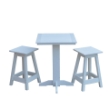





























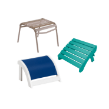





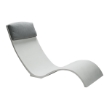







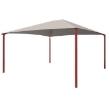
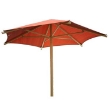
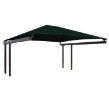
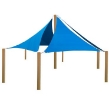
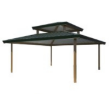
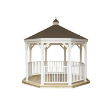
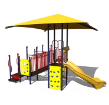











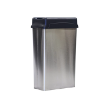




























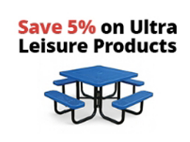



Leave your comment